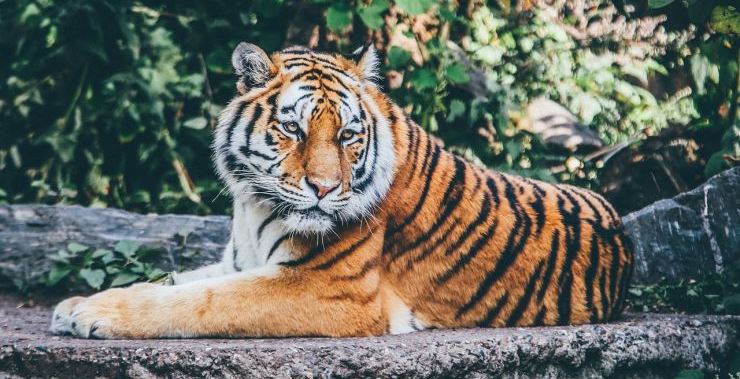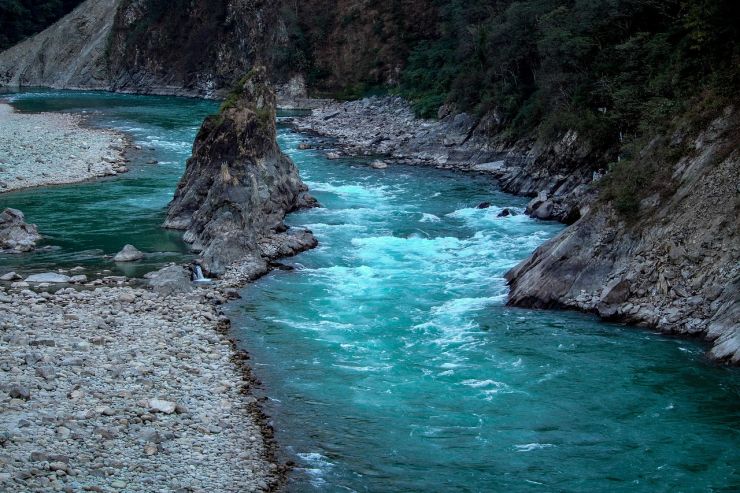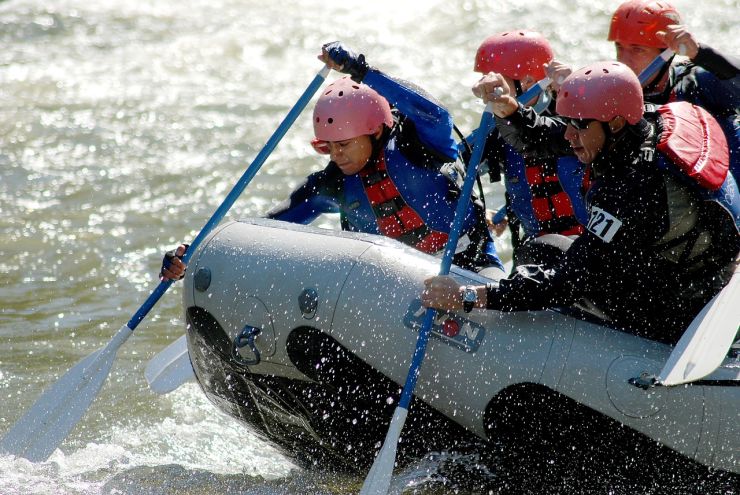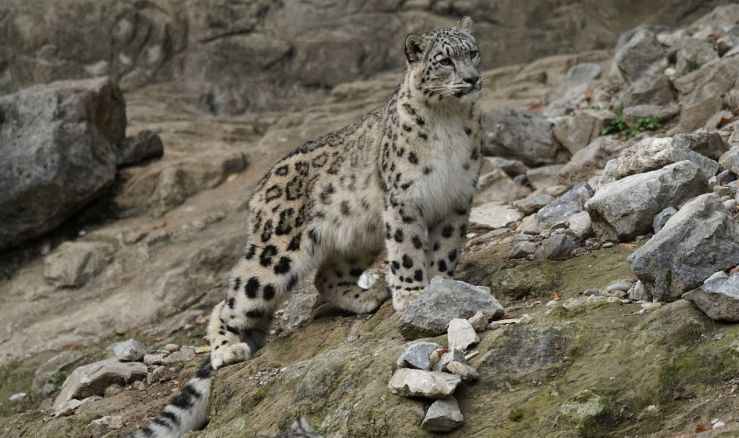Arunachal Pradesh: Untouched, unseen, unbelievable
The largest of the Seven Sisters of the North East, Arunachal Pradesh literally means ‘the land of dawn-lit mountains’. This almost virgin land beckons visitors with its verdant valleys, pristine water bodies, rich heritage and ancient monuments.
This untouched state in the far East of India attracts visitors not just with its natural beauty, but also promises to take the traveller on a spiritual journey. Away from the maddening buzz of a city, Arunachal Pradesh is the perfect getaway destination for families and youngsters alike. Avid travellers to the North East find themselves drawn back to this state, that traces its origins to the Tibetan people.
Visit Arunachal Pradesh and discover the hidden gems of one of nature’s last frontiers.
| Arunachal Pradesh: A Quick View of the state |
| Capital |
Itanagar |
| Official Language |
Hindi, Deori, Assamese, and English |
| Dial Code |
360 |
| Population |
16.836 lakhs (as of 2018) |
| Currency |
Indian Rupee (INR) |
| Time Zone |
UTC+05:30 (IST) |
| Area |
83,743 square km |
Highlights of Arunachal Pradesh: things to see and do
Arunachal Pradesh will mesmerize you with its untouched beauty. The mountainous land offers the traveller a range of options to choose from on their journey of discovery. Whether you seek nature, or your interest lies in history; whether you are looking for peace and tranquillity or are of an adventurous bent of mind, Arunachal Pradesh has it all.
Wildlife
Arunachal Pradesh is famous the world over for its incredible wildlife. What many people don’t know that it is the only state in India to house four species of cats in one sanctuary. The wildlife is not restricted to mammals alone. Arunachal Pradesh boasts of a rich diversity that includes the black bear, red panda, goral, civet, linsang, mongoose, porcupines and small rodents. While in Arunachal Pradesh, you must visit:

- Dibang Wildlife Sanctuary
- Eaglenest Wildlife Sanctuary
- Itanagar Wildlife Sanctuary
- Mehao Wildlife Sanctuary
- Pakhui Wildlife Sanctuary
- D’Ering Memorial Wildlife Sanctuary
Places of religious significance
Besides the amazing wildlife, Arunachal Pradesh is dotted with several temples, monasteries and gompas spread across the length and breadth of the state. Some of the must-visit places include:
- Parasuram Kunda
- Akashganga Temple
- Tawang Monastery
- Urgelling Monastery
- Bomdila Monastery
- Lhagyala Gompa
- Gyangong Ani Gompa
Places to visit
The state offers a break from the buzz of the city with its quaint destinations. When in Arunachal Pradesh, do visit:
- Tawang
- Bomdila
- Ziro
- Itanagar
- Pasighat
- Roing
- Bhalukpong
- Sela Pass
- Dirang
Art and Culture
The rich colours of Arunachal Pradesh are evident in the art and handicrafts of the state. The dresses too are rich tapestries woven with traditional patterns and motifs. Silver and bamboo jewellery is popular among the women. The people here celebrate life with gusto, and dance and songs accompany every festival, of which there are many.
Festivals: Arunachal Pradesh is a state with several colourful festivals. The people celebrate their life and each season with passion. There are songs, dances, and people pray to the gods for looking after their community. A trip to Arunachal Pradesh is a great cultural holiday.

Adventure activities

Arunachal Pradesh offers numerous avenues for adventure aficionados. You can trek in the mountains or do what all adventure seekers do in Arunachal Pradesh – water rafting. You can choose to raft on the Brahmaputra or its tributary Subansari, or Kameng, said to be the most challenging of all river rafting locations in India.
Interesting facts about Arunachal Pradesh
- This state has the maximum number of regional languages in all of India.
- It is the largest of the seven sister states in actual land area.
- 26 major tribes and 100 sub-tribes reside in the state even today. And yet it has India’s thinnest population density of around 13 persons per sq. km.
- Did you know that you need a permit to roam around Arunachal Pradesh, even as an Indian citizen?
- The 400-year old Twang monastery is India’s largest and the world’s second-largest.
- Excavations have unearthed Neolithic tools that date back more than 11,000 years.
- India’s longest river bridge connects Arunachal Pradesh with Assam.
- English is the official language of Arunachal Pradesh.
- It has India’s only protected habitat for four cat species – tiger, leopard, clouded leopard and the snow leopard.

Location
Arunachal Pradesh, one of the beautiful seven sister states of India, is in the North-Eastern-most corner of the country. Inwards, it touches Assam and Nagaland to the south, and it shares international borders with Bhutan to the west, Myanmar in the east and China in the north.
Arunachal Pradesh is part of the outer Himalayas and Patkoi ranges. This location has bestowed upon it a landscape that is beautiful and varying at every few kilometres. There are mountains and mountain rivers, streams, verdant valleys, and vegetation and wildlife that is unique to the region.
Click here to view Arunachal Pradesh on Google Map
Timings: when you should visit
The high altitude of Arunachal Pradesh makes summers warm and pleasant, and it is thus a good time for a relaxing family vacation. Honeymooners and solo travellers also like traveling to this state in summer.
If sightseeing is on the agenda, then winter is the best time to plan your trip to Arunachal Pradesh. The temperature stays between 8-14 degrees and while it can get chilly, the overall weather remains quite refreshing. Winter is also when Arunachal Pradesh dresses up in its finery for its winter festival, Pangsau Pass. This is celebrated in January and it is one of the most popular tourism attractions of Arunachal Pradesh. Nyokum Yullo and Chalo Loku are two agricultural festivals that are celebrated with immense gusto in February. Winter visitors to Arunachal Pradesh must try and coincide their vacation with these festivals.
How to get to Arunachal Pradesh
By flight - Arunachal Pradesh doesn’t have an airport of its own. The nearest ones are at Guwahati, Dibrugarh and Tezpur. Weather permitting, you can avail a helicopter ride from Guwahati to some parts of Arunachal Pradesh, like Tawang and Pasighat. The fares are reasonable. Do make sure you arrange road transport before you arrive as there are no taxis operating at the helipad.
By road - Arunachal State Transport runs daily buses from Guwahati to Bomdila and Itanagar. The buses depart 6-7 am, so make sure you get to the bus stand early. You can even hire a private vehicle at Tezpur in Assam. Book one from a reputed travel agency for your comfort and safety. Ask the driver to halt at Sela Pass for some picture-perfect moments.
By train - Arunachal Pradesh got its first railway as late as 2013. Today, you can book yourself a ticket from Delhi to Naharlagun, a mere 10 kilometres from the state capital of Itanagar.
History: a legacy lost in time
Most of the population of Arunachal has descended from the great AboTani, believed to be the first man of the five main tribes – Tagin, Nyishi, Adi, Galo and Apatani. Unfortunately, there are conflicting historical claims and not much recorded past from the many tribes that reside here. This has presented challenging obstacles to understanding the early traditions and culture of this beautiful state.
Written records of the region only surface in the Chutiya chronicles, which shed light on the history of this magical region. While there were several other tribes as well, such as the Monpa and Sherdukpen, most of them remained autonomous until India’s independence in 1947.
But before that, in 1913–1914, while under the British rule, representatives from Tibet, China and Britain signed the Simla Accord which led to the McMahon Line, a negotiation rejected by the Chinese representatives. After Independence, in 1954, the NEFA (North-East Frontier Agency) was established. It was only as late as 1972 that Arunachal Pradesh was named as such, and it became a state of India in 1987.



























